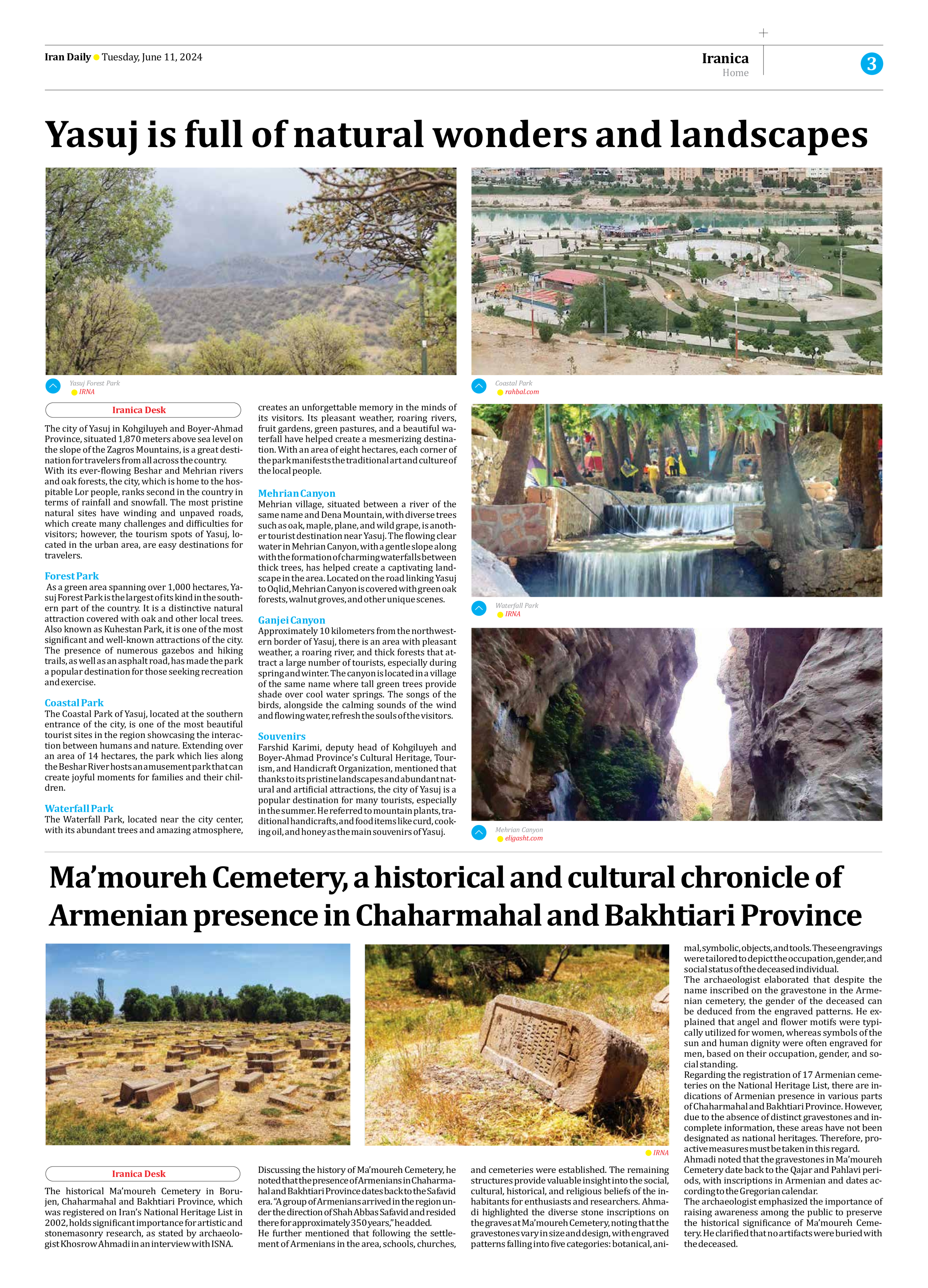
Ma’moureh Cemetery, a historical and cultural chronicle of Armenian presence in Chaharmahal and Bakhtiari Province
The historical Ma’moureh Cemetery in Borujen, Chaharmahal and Bakhtiari Province, which was registered on Iran’s National Heritage List in 2002, holds significant importance for artistic and stonemasonry research, as stated by archaeologist Khosrow Ahmadi in an interview with ISNA.
Discussing the history of Ma’moureh Cemetery, he noted that the presence of Armenians in Chaharmahal and Bakhtiari Province dates back to the Safavid era. “A group of Armenians arrived in the region under the direction of Shah Abbas Safavid and resided there for approximately 350 years,” he added.
He further mentioned that following the settlement of Armenians in the area, schools, churches, and cemeteries were established. The remaining structures provide valuable insight into the social, cultural, historical, and religious beliefs of the inhabitants for enthusiasts and researchers. Ahmadi highlighted the diverse stone inscriptions on the graves at Ma’moureh Cemetery, noting that the gravestones vary in size and design, with engraved patterns falling into five categories: botanical, animal, symbolic, objects, and tools. These engravings were tailored to depict the occupation, gender, and social status of the deceased individual.
The archaeologist elaborated that despite the name inscribed on the gravestone in the Armenian cemetery, the gender of the deceased can be deduced from the engraved patterns. He explained that angel and flower motifs were typically utilized for women, whereas symbols of the sun and human dignity were often engraved for men, based on their occupation, gender, and social standing.
Regarding the registration of 17 Armenian cemeteries on the National Heritage List, there are indications of Armenian presence in various parts of Chaharmahal and Bakhtiari Province. However, due to the absence of distinct gravestones and incomplete information, these areas have not been designated as national heritages. Therefore, proactive measures must be taken in this regard.
Ahmadi noted that the gravestones in Ma’moureh Cemetery date back to the Qajar and Pahlavi periods, with inscriptions in Armenian and dates according to the Gregorian calendar.
The archaeologist emphasized the importance of raising awareness among the public to preserve the historical significance of Ma’moureh Cemetery. He clarified that no artifacts were buried with the deceased.







